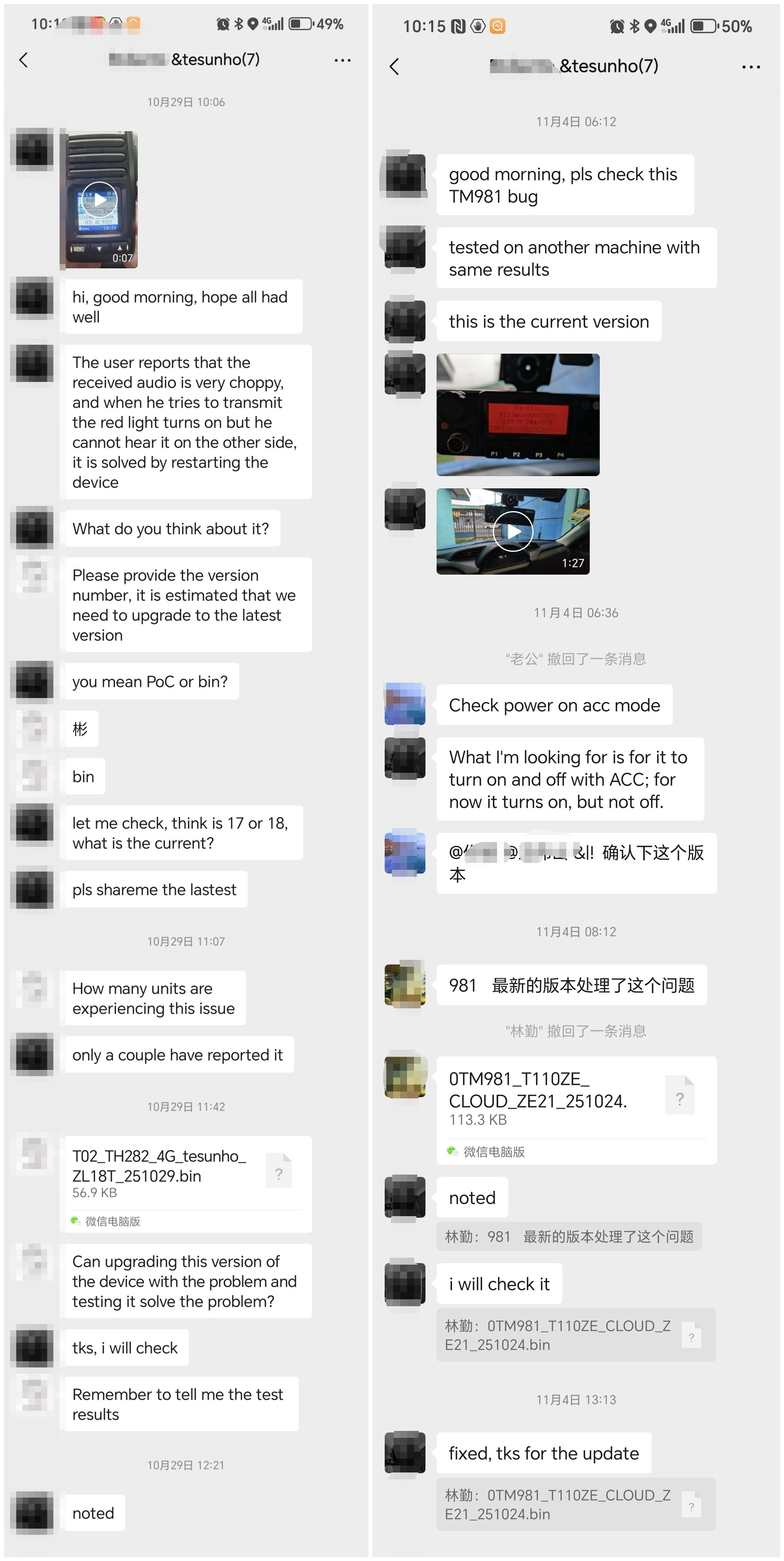Quanzhou TESUNHO Electronics Co.,Ltd
Tel:86 595 2208 2266
Fax:86 595 2208 2266
Mob:0086 18750083582
E-mail:[email protected]
Case Background:
A customer reported quality issues with 80 newly purchased hand mics, stating that the PTT buttons were stuck, causing prolonged channel occupation. The customer initially suspected that the issue might involve the hand mics, internal radio connectors, or other components and requested an urgent replacement of all devices.
Troubleshooting Process:
1. Initial Feedback:
The customer initially claimed that all 80 hand mics might be defective, but failed to provide direct evidence such as videos, relying only on observations from the dispatcher indicating abnormal transmissions in some devices.
Tesunho advised that the customer first use the substitution method (swapping suspected defective hand mics with known functional ones) to identify the root cause and requested cooperation in providing more specific fault details (e.g., video).
2. On-Site Investigation:
Upon arrival, the customer's technical team followed Tesunho's suggested steps and discovered that only two hand mics had stuck PTT buttons, while the rest functioned normally.
The issue was eventually confirmed as a hardware defect in the hand mics, and the customer resolved it by replacing the faulty units from local inventory, avoiding a large-scale return.
3. Root Cause:
The issue stemmed from mechanical defects in the PTT buttons of a few hand mics and was not related to the radio's internal connectors or servers.
Key Takeaways:
1. Accuracy in Issue Reporting is Critical:
Exaggerated descriptions (e.g., "all devices are defective") can lead to misdirection in troubleshooting and prolong resolution time.
Customers are encouraged to provide specific fault details, video evidence, and reproduction steps in order to help quickly pinpoint the issue and accelerate resolution.
2. Collaboration and Rapid Response are Key to Efficiency:
The active cooperation of the customer’s technical team (e.g., on-site substitution tests, video documentation) significantly reduced troubleshooting time.
When reporting issues, customers should include the following details:
·Specific quantity, serial numbers, PoC version, and bin version of faulty devices
·Detailed description of the issue (with video or images)
·Steps already taken for troubleshooting
Standardization of this process can reduce communication overhead and improve efficiency. Establishing a structured feedback mechanism helps all parties (customer, distributor, manufacturer) quickly identify issues.
Tesunho's step-by-step guidance, coupled with the customer's execution, formed an efficient problem-solving loop.
3. The Value of Long-Term Collaboration:
This case helped to build a trust-based cooperation model between the customer and Tesunho, which reduced future communication barriers for similar issues.
Conclusion:
The shift from 80 defective hand mics to only 2 defective hand mics highlights the importance of accurate reporting and proactive collaboration. Tesunho is committed to problem-solving, and the customer's cooperation played a crucial role in identifying issues quickly. We hope that this case will help more customers understand that precise information and efficient teamwork are the best paths to resolution.
We are looking forward to working with all customers to create a smoother after-sales service experience!
Here are some good examples from our customers:

Quanzhou TESUNHO Electronics Co.,Ltd
Tel:86 595 2208 2266
Fax:86 595 2208 2266
Mob:0086 18750083582
E-mail:[email protected]


Tesunho T61 Commercial Analog Radio is ready. Please reach out to us for more information.